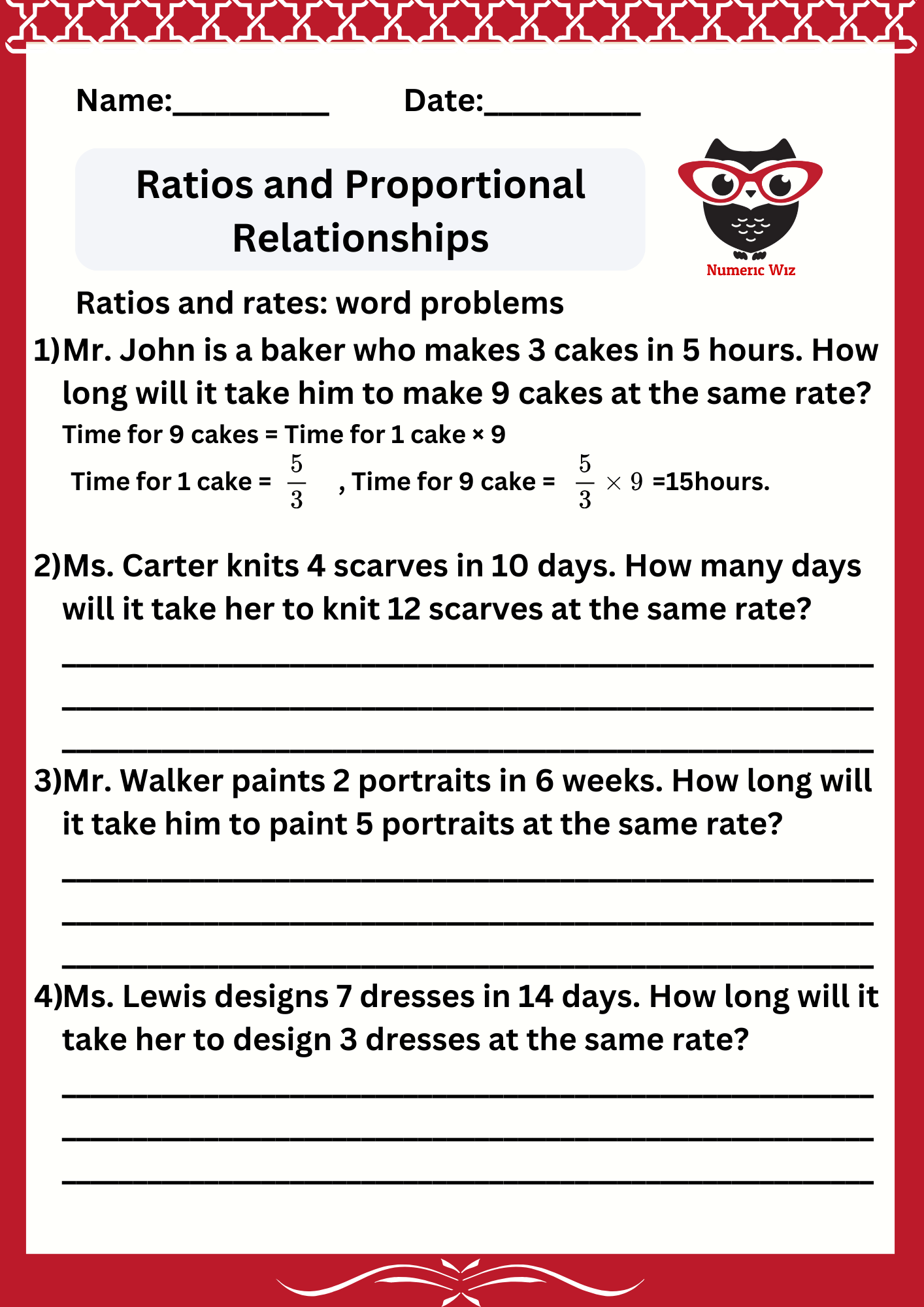
Ratios and rates are powerful tools for solving real-world problems. This topic focuses on applying these concepts to word problems, helping you tackle scenarios like comparing prices, calculating speed, and more. By mastering ratios and rates, you'll build a strong foundation for solving practical math challenges with confidence.

A 12-pack of soda costs $9.60. What is the cost per soda?
Solution: Divide the total cost by the number of sodas:
$9.60 ÷ 12 = $0.80 per soda.
A cyclist covers 150 miles in 5 hours. What is the cyclist’s speed per hour?
Solution: Divide the total distance by the time:
150 miles ÷ 5 hours = 30 miles per hour.
Two bakeries sell cookies:
Bakery A: 24 cookies for $18.
Bakery B: 15 cookies for $12.
Which is the better deal?
Solution:
Bakery A: $18 ÷ 24 = $0.75 per cookie.
Bakery B: $12 ÷ 15 = $0.80 per cookie.
Bakery A offers the better price per cookie.
A school has 200 students and 10 teachers. What is the student-to-teacher ratio?
Solution: Divide the number of students by the number of teachers:
200 ÷ 10 = 20:1 student-to-teacher ratio.
These problems help connect math to daily life, from comparing deals at the store to calculating travel speeds. By practicing, you'll improve critical thinking, decision-making, and mathematical reasoning—essential skills for school and beyond!
Let’s learn to tackle real-life word problems involving shopping, budgeting, and travel.
For a limited time
